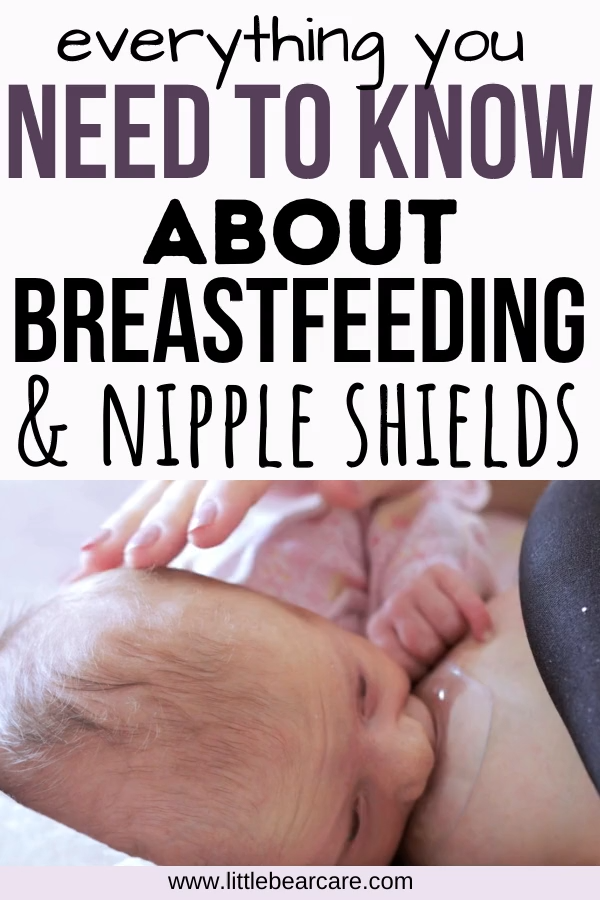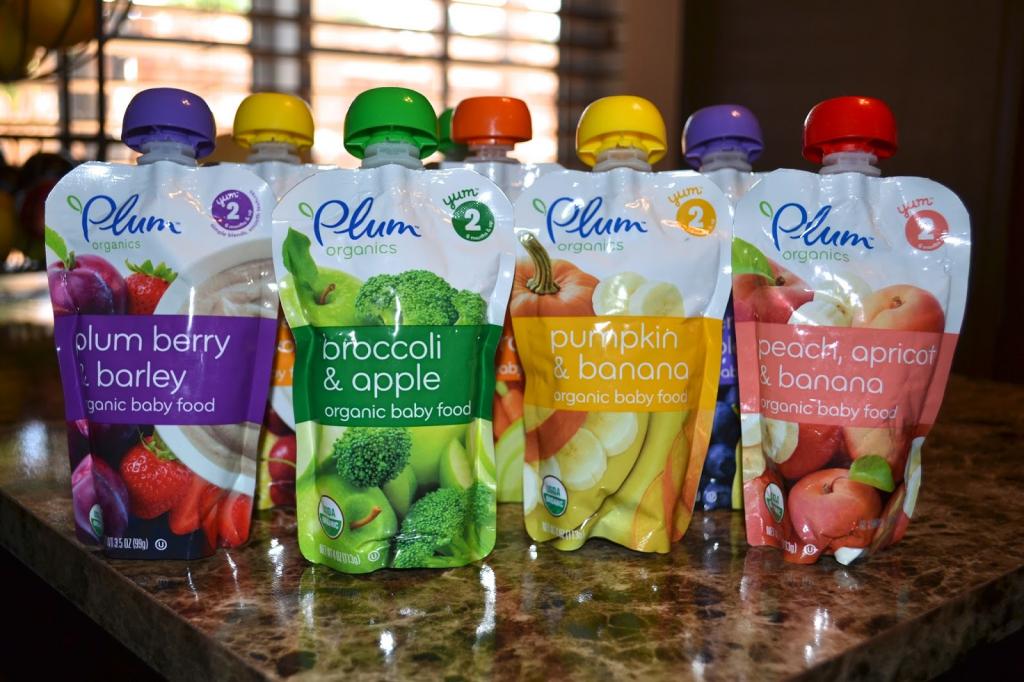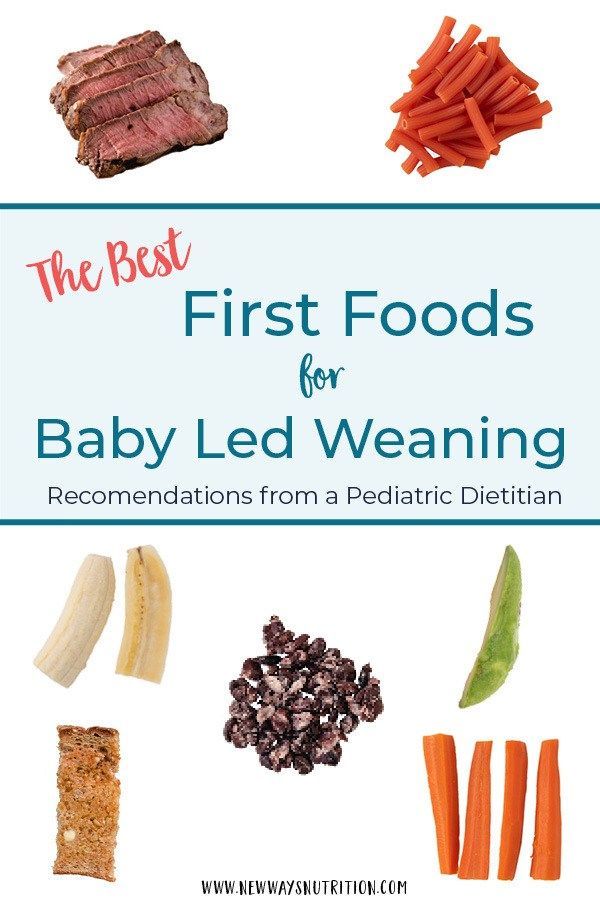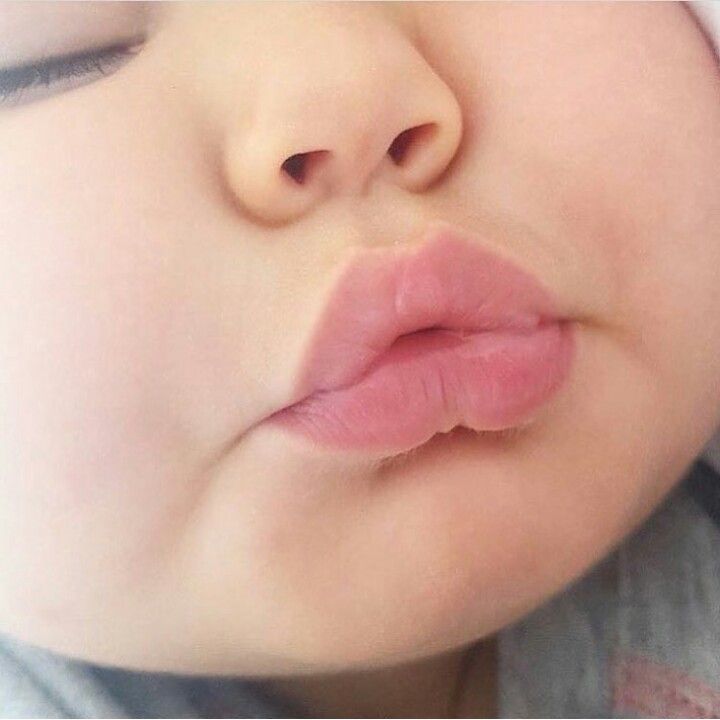How many ounces for baby feeding
Formula Feeding FAQs: How Much and How Often (for Parents)
Whether you plan to formula feed your baby from the start, want to supplement your breast milk with formula, or are switching from breast milk to formula, you probably have questions.
Here are answers to some common questions about formula feeding.
How Often Should I Feed My Baby?
Newborns and young babies should be fed whenever they seem hungry. This is called on-demand feeding.
After the first few days of life, most healthy formula-fed newborns feed about every 2–3 hours. As they get bigger and their tummies can hold more milk, they usually eat about every 3–4 hours. As babies get older, they’ll settle into a more predictable feeding routine and go longer stretches at night without needing a bottle.
Talk to your doctor if you have concerns about feeding your baby, especially if your baby is very small, is not gaining weight, or was born early (prematurely).
How Can I Tell When My Baby Is Hungry?
Signs that babies are hungry include:
- moving their heads from side to side
- opening their mouths
- sticking out their tongues
- placing their hands, fingers, and fists to their mouths
- puckering their lips as if to suck
- nuzzling again their mothers' breasts
- showing the rooting reflex (when a baby moves its mouth in the direction of something that's stroking or touching its cheek)
Babies should be fed before they get upset and cry. Crying is a late sign of hunger. But every time your baby cries is not because of hunger. Sometimes babies just need to be cuddled or changed. Or they could be sick, tired, too hot or too cold, in pain, or have colic.
How Much Should My Baby Drink?
In the first few weeks, give 2- to 3-ounce (60- to 90-milliliter) bottles to your newborn. Give more or less depending on your baby’s hunger cues.
Here's a general look at how much your baby may be eating at different ages:
- On average, a newborn drinks about 1.5–3 ounces (45–90 milliliters) every 2–3 hours. This amount increases as your baby grows and can take more at each feeding.
- At about 2 months, your baby may drink about 4–5 ounces (120–150 milliliters) every 3–4 hours.
- At 4 months, your baby may drink about 4–6 ounces (120-180 milliliters) at each feeding, depending on how often they eat.
- By 6 months, your baby may drink 6–8 ounces (180–230 milliliters) about 4–5 times a day.
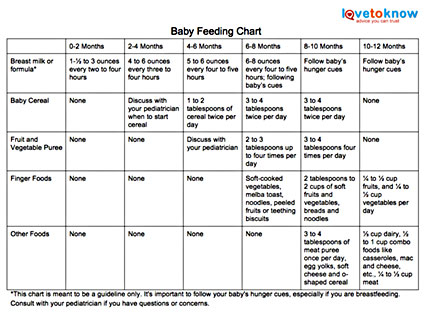
Watch for signs that your baby is hungry or full. Respond to these cues and let your baby stop when full. A baby who is full may suck with less enthusiasm, stop, or turn away from the bottle.
Why Does My Baby Seem Hungrier Than Usual?
As babies grow, they begin to eat more at each feeding and can go longer between feedings. Still, there may be times when your little one seems hungrier than usual.
Your baby may be going through a period of rapid growth (called a growth spurt). These can happen at any time, but in the early months are common at around:
- 7–14 days old
- between 3–6 weeks
- 4 months
- 6 months
During these times and whenever your baby seems especially hungry, follow their hunger cues and continue to feed on demand, increasing the amount of formula you give as needed.
Is My Baby Eating Enough?
At times, you may wonder whether your baby is getting enough nutrients for healthy growth and development. Babies who get enough to eat seem satisfied after eating and are regularly peeing and pooping.
Babies who get enough to eat seem satisfied after eating and are regularly peeing and pooping.
At your baby’s checkups, the doctor will review your baby’s growth chart, track your little one’s development, and answer any questions. Talk to your doctor if you have any concerns about your baby’s feeding and nutrition.
Reviewed by: Mary L. Gavin, MD
Date reviewed: November 2021
How Often and How Much Should Your Baby Eat?
By: Sanjeev Jain, MD, FAAP
One of the most common questions new parents have is how often their baby should eat. The best answer is surprisingly simple: in general, babies should be fed whenever they seem hungry.
How do I know when my baby is hungry?
For babies born
prematurely or with certain medical conditions, scheduled feedings advised by your pediatrician are best. But for most healthy, full-term infants, parents can look to their baby rather than the clock for hunger cues. This is called feeding on demand, or
responsive feeding.
This is called feeding on demand, or
responsive feeding.
Hunger cues
A hungry baby often will cry. But it's best to watch for hunger cues before the baby starts crying, which is a late sign of hunger and can make it hard for them to settle down and eat.
Some other typical hunger cues in babies:
Licking lips
Sticking tongue out
Rooting (moving jaw and mouth or head in search of breast)
Putting his/her hand to mouth repeatedly
Opening her mouth
Fussiness
Sucking on everything around
It is important to realize, however, that every time your baby cries or sucks it is not necessarily because he or she is hungry. Babies suck not only for hunger, but also for comfort; it can be hard at first for parents to tell the difference. Sometimes, your baby just needs to be cuddled or changed.
General guidelines for baby feeding
It is important to remember all babies are different―some like to snack more often, and others drink more at one time and go longer between feedings. However, most babies will drink more and go longer between feedings as they get bigger and their tummies can hold more milk:
However, most babies will drink more and go longer between feedings as they get bigger and their tummies can hold more milk:
Most newborns eat every 2 to 3 hours, or 8 to 12 times every 24 hours. Babies might only take in half ounce per feeding for the first day or two of life, but after that will usually drink 1 to 2 ounces at each feeding. This amount increases to 2 to 3 ounces by 2 weeks of age.
At about 2 months of age, babies usually take 4 to 5 ounces per feeding every 3 to 4 hours.
At 4 months, babies usually take 4 to 6 ounces per feeding.
At 6 months, babies may be taking up to 8 ounces every 4 to 5 hours.
Most babies will increase the amount of formula they drink by an average of 1 ounce each month before leveling off at about 7 to 8 ounces per feeding.
Solid foods should be started at about 6 months old.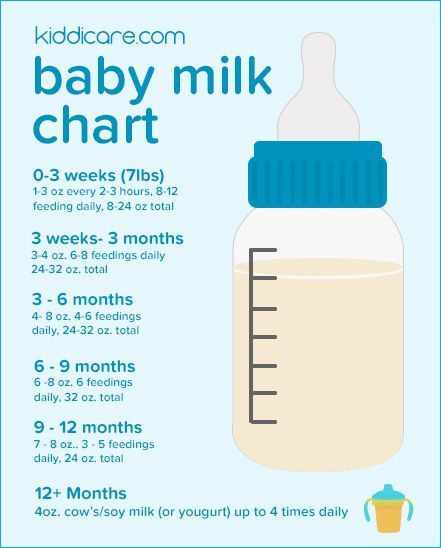
Concerns about overfeeding or underfeeding your baby
Too full?
Babies are usually pretty good at eating the right amount, but they can sometimes take in more than they need. Infants who are bottle feeding may be more likely to overfeed, because drinking from a bottle may take less effort than breastfeeding.
Overfed babies can have stomach pains, gas, spit up or vomit and be at higher risk for obesity later in life. It's better to offer less, since you can always give more if your baby wants it. This also gives babies time to realize when they're full.
If you are concerned your baby wants to eat
all the time―even when he or she is full―talk with your pediatrician.
Pacifiers may be used after feeding to help sooth healthy-weight babies who like to suck for comfort, rather than nutrition. For babies who are breastfed, it's best to wait to offer pacifiers until around 3 to 4 weeks of age, when breastfeeding is well-established.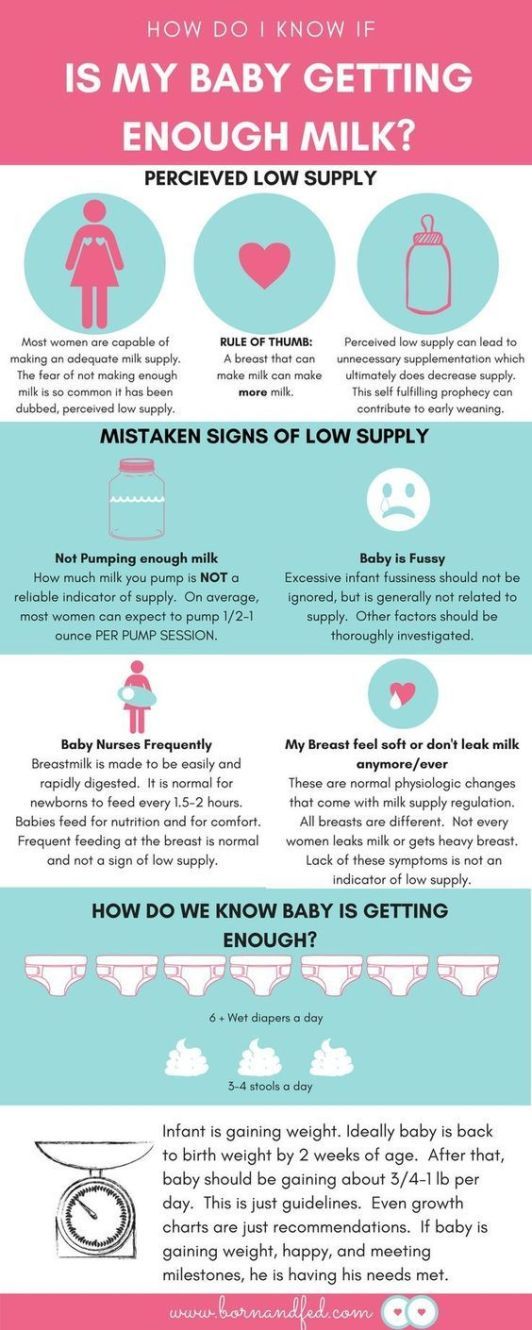
Trouble gaining weight?
Most babies will double their birth weight by 5 months of age and triple their birth weight by their first birthday. If your baby is having trouble gaining weight, don't wait too long between feeding―even if it means waking your baby. Be sure to talk with your pediatrician about how often and how much to feed your baby.
How do I know if my baby is getting enough to eat?
Daily diapers
A newborn's diaper is a good indicator of whether he or she is getting enough to eat. In the first few days after birth, a baby should have 2 to 3 wet diapers each day. After the first 4 to 5 days, a baby should have at least 5 to 6 wet diapers a day. Stool frequency is more variable and depends whether your baby is breastfed or formula fed.
Growth charts
During regular health check-ups, your pediatrician will check your baby's weight and plot it on a
growth chart. Your baby's progress on the growth chart is one way to tell whether or not they are getting enough food.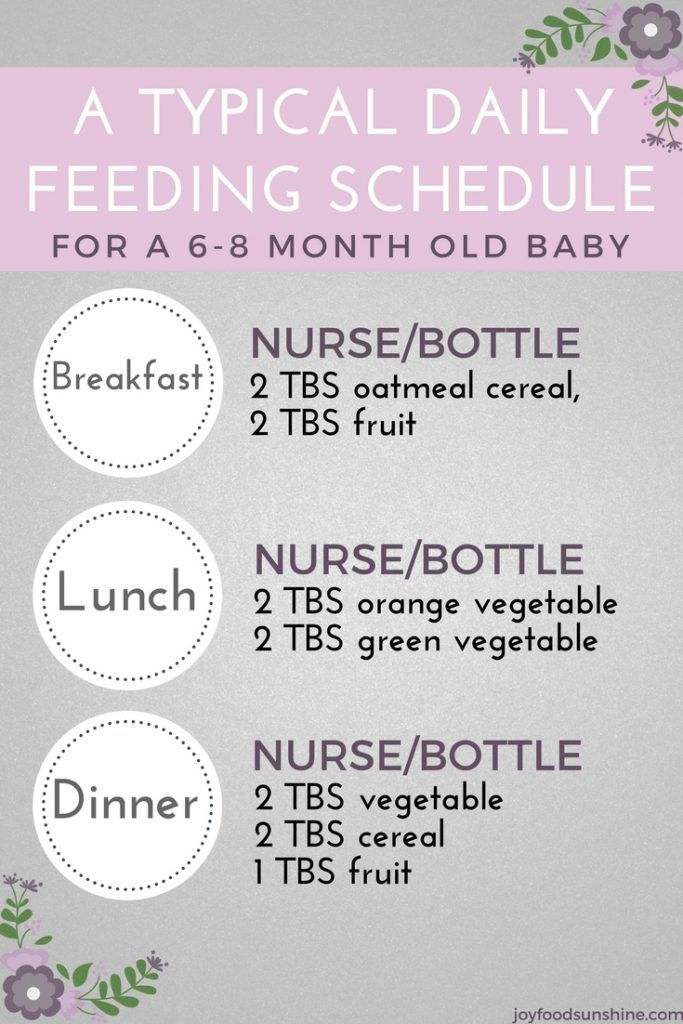 Babies who stay in healthy growth percentile ranges are
probably getting a healthy amount of food during feedings.
Babies who stay in healthy growth percentile ranges are
probably getting a healthy amount of food during feedings.
Remember
Talk with your pediatrician if you have any questions or concerns about your baby getting the right amount to eat.
More information:
- Making Sure Your Baby is Getting Enough Milk
- Amount and Schedule of Formula Feedings
- Is Your Baby Hungry or Full? Responsive Feeding Explained (Video)
- Remedies for Spitty Babies
- Ask the Pediatrician: With the baby formula shortage, what should I do if I can't find any?
- Ask the Pediatrician: How should we feed our baby if we're running low on money?
-
Airplane Choo Choo: A Feeding Guide for Children (National Dairy Council)
About Dr. Jain:
Sanjeev Jain, MD, FAAP, is a Clinical Associate Professor of General Pediatrics and Adolescent Medicine at the University of Wisconsin School of Medicine and Public Health.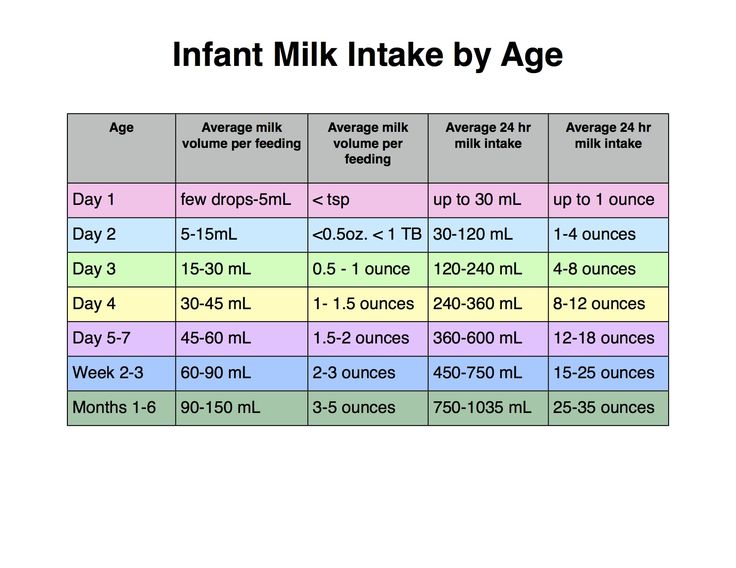 Within the American Academy of Pediatrics, he is a member of the Section on International Child Health and the Wisconsin State Chapter.
Within the American Academy of Pediatrics, he is a member of the Section on International Child Health and the Wisconsin State Chapter.
The information contained on this Web site should not be used as a substitute for the medical care and advice of your pediatrician. There may be variations in treatment that your pediatrician may recommend based on individual facts and circumstances.
How many ounces should a newborn eat?
Share on Pinterest
content
Let's be honest: newborns don't do much. There one eats, sleeps and drinks, and then sleeps again, eats and consumes food. But don't be fooled by your toddler's small schedule.
In fact, your baby does important work in the first few weeks of life. All this sleep and food helps them grow at an astonishing rate.
But you might be wondering how much your newborn should actually be eating. Here is a feeding guide for new parents. nine0003
You may be worried about getting your child to eat as soon as possible.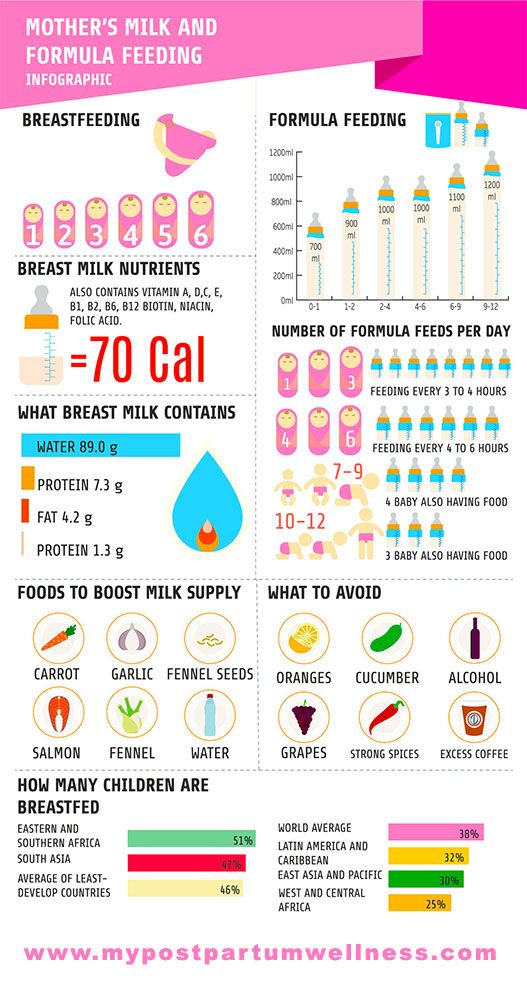 But on the first day of life, it's entirely possible that your baby was born the same way you were after you were born.
But on the first day of life, it's entirely possible that your baby was born the same way you were after you were born.
It is not uncommon for children to be very sleepy in the first 24 hours of life. That first period of 24 hours after birth can be a learning curve so that the baby can literally learn to eat and stay awake enough to eat. Don't worry too much if your child doesn't show interest in eating every two hours on a schedule. nine0003
One study found that, on average, breastfed babies ate about eight meals and wore three wet or dirty diapers in the first 24 hours of life. This is less than he will then eat and eliminate.
You may be shocked to see how little your newborn actually eats during breastfeeding on the first day of life. This is normal, so don't worry. Keep in mind that your baby only drinks colostrum until you have milk (around the third birthday). nine0003
Colostrum is like a concentrated superfood, full of calories and nutrients, making it sufficient even in small amounts for the first few days.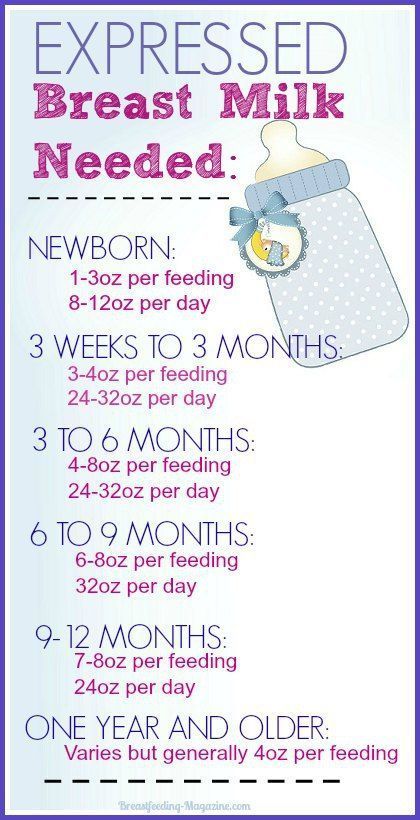 Think quality over quantity.
Think quality over quantity.
The average healthy newborn drinks about 1/2 ounce of colostrum during the first 24 hours of life. Of course, all children are different.
Newborns are especially awake an hour or two after birth, so it is important to start breastfeeding as early as possible. If you skip this very active stage, the baby may become more sleepy later, making it difficult to train the lobe for the first initial feed. nine0003
If the baby does not show any signs of jumping, continue breastfeeding every two to three hours. This can take a lot of practice, so it's important to be patient because your child will find the best way to jump.
Write down the feeding times and the number of wet and dirty diapers your baby had while you were in the hospital. The nurse and doctor can help you determine if your child needs additional caregiver support or additional services. nine0003
Feed by weight
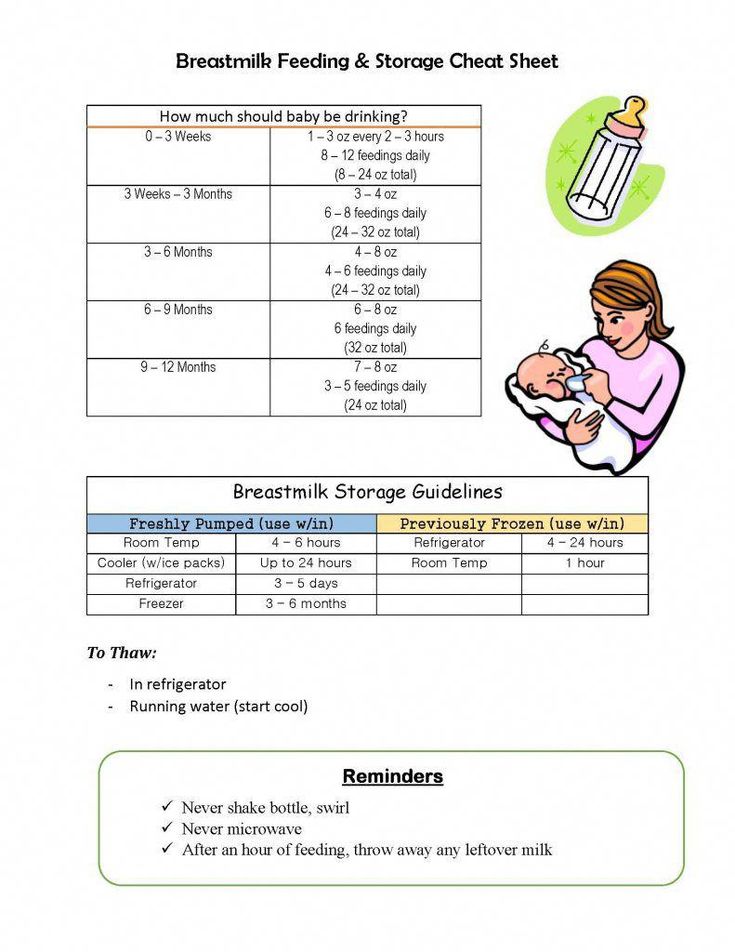 5 ounces for every pound of that pound. So, if your child weighs 10 pounds, you should eat a total of 25 ounces a day.
5 ounces for every pound of that pound. So, if your child weighs 10 pounds, you should eat a total of 25 ounces a day. Extract The American Academy of Pediatrics (AAP) explains that after the first few days, your breastfed newborn will drink 2 to 3 ounces (60 to 90 milliliters) of formula at each feed.
You will need to eat about every three to four hours. This is comparable to a breastfed baby who typically eats every two to three hours. nine0003
When the baby is one month old, he should eat about 1 ounce every four hours.
If you are exclusively breastfeeding, you will not measure your baby's ounces for feeding. Instead, you will simply feed your baby on demand or whenever he eats.
A newborn will typically eat every two to three hours during the first months of life, but this may vary. The feeding schedule starts from the moment the baby starts suckling. nine0003
For example, in the first few weeks, if your baby starts eating at 2 am and breastfeeds for 40 minutes, he may be ready to eat at 4 am.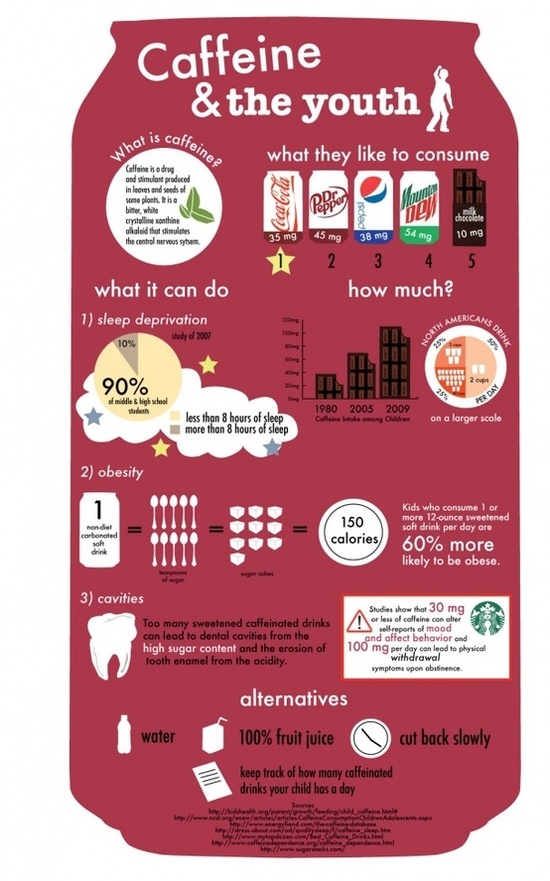 Hello chocolate milk!
Hello chocolate milk!
Sometimes the baby may breastfeed more or less often. Your baby may want to breastfeed more if he is sick. Grooming is a mechanism for comfort and boosting immunity. They may want to eat more if they are on a rise and need extra calories.
Oba AAP a World Health Organization recommend breastfeeding on demand. So don't worry, you can't exclusively breastfeed. nine0003
Your child will signal to you when it is full by pressing or stopping the shutter until it is ready on its own. And if you drink exclusively, follow the rules of self-preservation to improve milk production, and pay attention to your baby's cues about how much to feed.
It is best to feed your baby when he is hungry rather than following a strict schedule. Work with your doctor to make sure your child is developing and developing properly. nine0003
Q:
How do you know if you are feeding your baby properly?
Patient Anonymous
A:
Your baby will show signs of satiety, showing less interest in milk and sipping milk. Do not force your child to eat more than he needs if he continues to grow well. One of the signs that you may be overeating is that you see your child spit up heavily on any food. If this occurs without overfeeding, be sure to ask your pediatrician about it. When visiting the pediatrician, talk about how well your child is growing in weight and height. Steady growth along the growth curve is always a good sign that your child is eating a healthy amount of food. nine0003
Do not force your child to eat more than he needs if he continues to grow well. One of the signs that you may be overeating is that you see your child spit up heavily on any food. If this occurs without overfeeding, be sure to ask your pediatrician about it. When visiting the pediatrician, talk about how well your child is growing in weight and height. Steady growth along the growth curve is always a good sign that your child is eating a healthy amount of food. nine0003
Nancy Choi, MD The answers represent the opinions of our medical experts. All content is for informational purposes only and should not be construed as medical advice.
How much formula does your child need?
It can be difficult to figure out how much formula to give your baby. Is he getting too much or too little? How much is enough? The answers depend mostly on how much your baby weighs and how he grows.
How much formula does a baby need: where to start
In general, children eat when they are hungry and stop when they are full.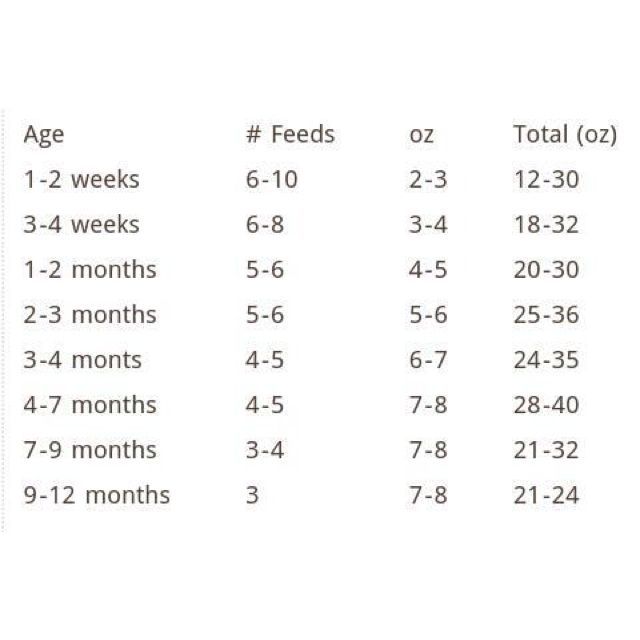 But formula-fed babies tend to have a harder time than breastfed babies, babies' appetites are different, and each baby's nutritional needs change from day to day.
But formula-fed babies tend to have a harder time than breastfed babies, babies' appetites are different, and each baby's nutritional needs change from day to day.
This may seem complicated, but if you follow the basic guidelines below and visit your pediatrician regularly, you will avoid all unwanted moments.
Our recommendations are for infants who are exclusively formula-fed for the first four to six months and then formula-fed solids until 1 year of age. nine0003
Don't give your baby more than 32 ounces of formula a day, and once he starts eating solids, you may need to reduce the amount of formula. Note: If your baby is receiving a combination of breast milk and formula, talk to your doctor for more detailed advice.
How much formula baby needs based on weight
For the first four to six months when your baby doesn't eat any solids, here's a simple rule: Offer 2.5 ounces of formula per pound of body weight each day. nine0003
For example, if your child weighs 6 pounds, you will give him about 15 ounces of formula in 24 hours. If he weighs 10 pounds, you give about 25 ounces in 24 hours.
If he weighs 10 pounds, you give about 25 ounces in 24 hours.
These numbers are not hard and fast rules. They give you an overall average of what your child might need. His daily feedings will vary depending on his individual needs - in other words, he may want a little more or a little less.
How much formula is needed for signs of hunger
Learn to read your baby's cues and you'll know when and how much to feed.
If your newborn baby is hungry, he will eventually cry. But crying is a late sign of hunger. Earlier signs to look out for are sucking, turning their head towards the hand when you caress the baby on the cheek, and bringing the hands to the mouth.
Change in appetite. Your child may be hungrier than usual during growth spurts. It usually occurs 10-14 days after birth and at 3 weeks, 6 weeks, 3 months and 6 months of age. And your baby may be less hungry than usual if he doesn't feel well. nine0003
Wanting more: You'll know your child wants more when he quickly eats everything offered and looks around for "an extra portion.![]() " If your child seems hungry after the first bottle, try another ounce or two more at a time. If you make more, the baby may not eat everything and you will have to throw away the leftovers.
" If your child seems hungry after the first bottle, try another ounce or two more at a time. If you make more, the baby may not eat everything and you will have to throw away the leftovers.
Getting too much food.
Vomiting after feeding may be a sign that your baby has overeaten. Abdominal pain after feeding can also be a sign of overeating. If your child pulls his legs up or his stomach feels tight, he may be in pain. nine0003
Crying is not always hunger.
Resist the urge to respond to your baby's every whimper with the bottle. Think of different options - especially if you've recently fed a baby - maybe he's crying because the diaper is wet, or the baby is cold or hot, he needs to burp, or he just wants to be near you.
How much formula a baby needs by age
Feed your newborn on demand for the first week. After that, it is important not to overfeed the baby so that he maintains a healthy weight. nine0003
nine0003
Most children want to eat every few hours. Start with 1.5-2 ounces at each feeding for the first week and work your way up to 2-3 ounces every three to four hours.
Signs your baby is getting the right amount of formula
Stable weight gain. The baby continues to gain weight after the first two weeks and maintains the same growth pattern during the first year of life. (Most babies lose up to 10 percent of their birth weight and then regain it by the time they are about 2 weeks old.)
Happy child. The baby seems relaxed and satisfied after feeding.
Wet diapers. Your child uses five to six diapers a day if you use disposable diapers, or six to eight if you use cloth diapers.
Worried about your baby getting too much or too little formula?
If you are concerned that your child is getting too little or too much formula, talk to your doctor. The doctor can check your child's weight and height, tell you if his intake is appropriate for his size and age, and advise you on any adjustments you may need.


